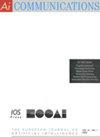信息提取工具 text2alm:从叙述到行动语言系统描述和查询回答
IF 1.4
4区 计算机科学
Q4 COMPUTER SCIENCE, ARTIFICIAL INTELLIGENCE
引用次数: 0
摘要
在这项工作中,我们设计了一种信息提取工具 text2alm,它能够理解叙事,重点是动作动词。该工具使用动作语言 ALM 对叙述中描述的事件的复杂互动进行推理。用于实现 text2alm 系统的方法最初由 Lierler、Inclezan 和 Gelfond(In IWCS 2017 - 12th International Conference on Computational Semantics - Short Papers (2017))通过手动将叙述转换为 ALM 模型的过程概述。我们完善了这一理论方法,并将其用于 text2alm 系统的设计。该系统依赖于人工智能两个不同领域的资源和技术,即(i)知识表示和推理以及(ii)自然语言处理。系统 text2alm 的有效性是通过其正确回答 2015 年 Facebook Research 发布的 bAbI 任务中的问题的能力来衡量的。在七项测试任务中,该工具在六项任务中的表现与最先进的机器学习方法不相上下,甚至更胜一筹。我们还说明,text2alm 方法适用于更广泛的叙述。在创建 text2alm 系统的过程中,我们设计了一个语义角色标签器 text2drs。它的独特之处在于使用细粒度语言本体 VerbNet 的元素作为语义角色/标签来注释所考虑的文本。本文将准确介绍 text2alm 和 text2drs 系统背后的细节。本文章由计算机程序翻译,如有差异,请以英文原文为准。
Information extraction tool text2alm: From narratives to action language system descriptions and query answering
In this work we design an information extraction tool text2alm capable of narrative understanding with a focus on action verbs. This tool uses an action language ALM to perform inferences on complex interactions of events described in narratives. The methodology used to implement the text2alm system was originally outlined by Lierler, Inclezan, and Gelfond (In IWCS 2017 – 12th International Conference on Computational Semantics – Short Papers (2017)) via a manual process of converting a narrative to an ALM model. We refine that theoretical methodology and utilize it in design of the text2alm system. This system relies on a conglomeration of resources and techniques from two distinct fields of artificial intelligence, namely, (i) knowledge representation and reasoning and (ii) natural language processing. The effectiveness of system text2alm is measured by its ability to correctly answer questions from the bAbI tasks published by Facebook Research in 2015. This tool matched or exceeded the performance of state-of-the-art machine learning methods in six of the seven tested tasks. We also illustrate that the text2alm approach generalizes to a broader spectrum of narratives. On the path to creating system text2alm, a semantic role labeler text2drs was designed. Its unique feature is the use of the elements of the fine grained linguistic ontology VerbNet as semantic roles/labels in annotating considered text. This paper provides an accurate account on the details behind the text2alm and text2drs systems.
求助全文
通过发布文献求助,成功后即可免费获取论文全文。
去求助
来源期刊

AI Communications
工程技术-计算机:人工智能
CiteScore
2.30
自引率
12.50%
发文量
34
审稿时长
4.5 months
期刊介绍:
AI Communications is a journal on artificial intelligence (AI) which has a close relationship to EurAI (European Association for Artificial Intelligence, formerly ECCAI). It covers the whole AI community: Scientific institutions as well as commercial and industrial companies.
AI Communications aims to enhance contacts and information exchange between AI researchers and developers, and to provide supranational information to those concerned with AI and advanced information processing. AI Communications publishes refereed articles concerning scientific and technical AI procedures, provided they are of sufficient interest to a large readership of both scientific and practical background. In addition it contains high-level background material, both at the technical level as well as the level of opinions, policies and news.
 求助内容:
求助内容: 应助结果提醒方式:
应助结果提醒方式:


